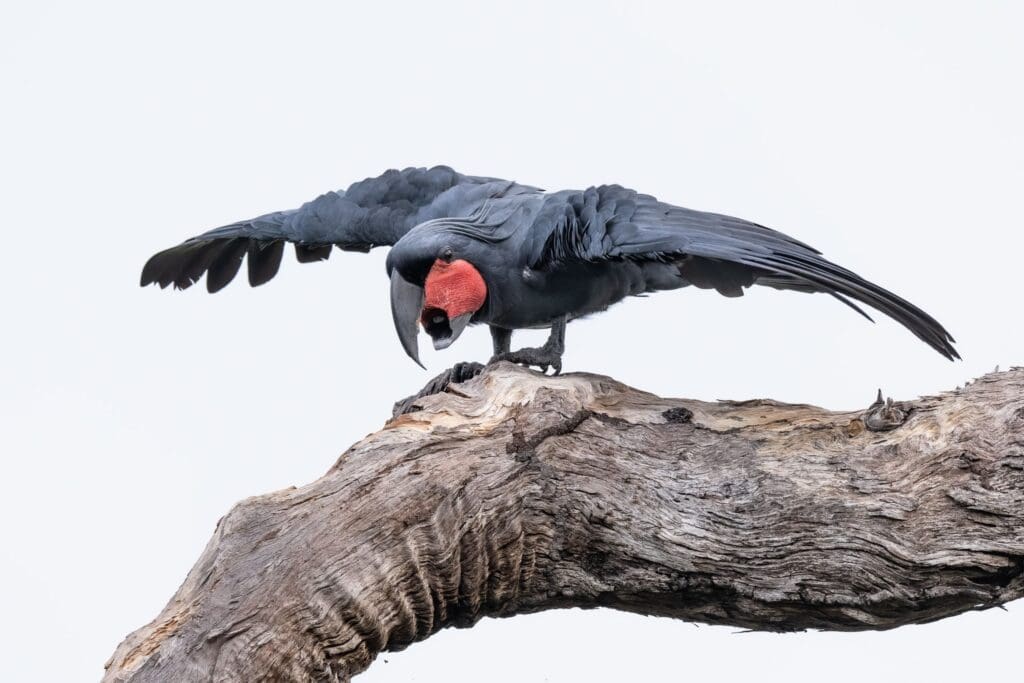About one-quarter of all Palm Cockatoo (Probosciger aterrimus) nest trees have been removed in Iron Range National Park, Cape York, severely limiting breeding. Recently, researchers discovered that a low reproductive rate in Australia suggests that the species is at risk long-term.
The WPT supported research and conservation for the Palm Cockatoo, providing funding for monitoring and tracking, observing nest sites, studying breeding habits and conducting surveys. Significant findings were that the Palm Cockatoo is a highly specialised feeder with a low breeding frequency. The WPT also began The Palm Cockatoo Fund in mid-2001 to further conservation and research of the species.
Status: IUCN Near Threatened / Appendix I
Population: 260,000–640,000 mature individuals; subspecies macgillivrayi 3000 individuals. Decreasing.
Threats: This species is inferred to be in decline across its range due to clearing for bauxite mining, changing fire regimes, competition with Sulphur-crested Cockatoos and increasing storm severity/frequency. In New Guinea, where >95% of the world population resides, the chief threats are habitat and nest cavity loss and trapping for the pet trade.
Range: P.a. aterrimus: Misool, in W Papuan Islands and Aru Islands, Indonesia.
P.a. macgillivrayi: S New Guinea between Fly and Balim Rivers, and Cape York Peninsula, N Queensland, Australia, south on the east coast to Princess Charlotte Bay and the west coast to Edward River.
P.a. goliath: W Papuan Islands, except Misool, Indonesia, and C New Guinea from Vogelkop, Irian Jaya, east to SE Papua New Guinea.
P.a. stenolophus: Japen Island in Geelvink Bay, Irian Jaya, and N New Guinea from Mamberamo River east to Collingwood Bay, SE Papua New Guinea.
Natural history: The Palm Cockatoo is found in New Guinea and adjacent islands, and N Australia (Queensland) in lowland areas, rainforest, forest edge, monsoon woodland, and tall secondary growth up to 1350 m (4428 ft). It is seen in pairs and small groups and is conspicuous in its behaviour. Birds forage for seeds, nuts, fruits, berries and leaf buds.

